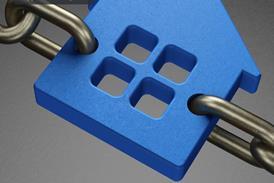Housing law
Repairs covenantCondensation damp is a common problem in housing disrepair cases.
The tenant may be able to claim damages for breach of repairing covenant (see Welsh v Greenwich LBC [2001] 33 HLR 40, CA), in which the landlord was obliged to 'maintain the dwelling in good condition and repair'.
However, this option is generally not available because most tenancy agreements merely reiterate the landlord's implied repairing obligations under section 11 of the Landlord and Tenant Act 1985.
Under section 11, the landlord's primary obligation is to keep in repair the 'structure and exterior' of the dwelling.Condensation damp does not normally arise as a result of disrepair to the structure or exterior.
Rather, it is caused by an inherent imbalance in the heating, insulation and ventilation in the dwelling as originally built.Accordingly, in Quick v Taff Ely BC [1986] QB 809, the Court of Appeal held that a landlord was not liable for the damage caused by condensation arising from this design defect.
Furthermore, it has been held that the tenant has no remedy under section 4 of the Defective Premises Act 1972: McNerny v Lambeth LBC (1988) 21 HLR 188, CA.
The tenant may bring a complaint in the magistrates' court on the ground that the condensation damp is such that the property is a statutory nuisance under the Environmental Protection Act 1990.
However, the 1990 Act does not provide a civil cause of action: Issa v Hackney LBC [1997] 1 WLR 956, CA.
There are numerous disadvantages to using the magistrates' court procedure, for example, the criminal burden of proof applies and the magistrates' powers to award compensation are restricted.
The Court of Appeal revisited condensation damp in Lee v Leeds CC and Radcliffe v Sandwell MBC [2002] EWCA Civ 6.
Both tenants' appeals were unsuccessful.
The Court of Appeal rejected the argument that Quick had been decided per incuriam Proudfoot v Hart (1890) 25 QBD 42, CA.
It also held that there is no implied term obliging the landlord to keep the property in good condition.
The court explored the effect of the Human Rights Act 1998.
It was held that the Court of Appeal's construction of section 11 of the 1985 Act in Quick was compatible with article 8 (right to respect for the home).
The court rejected the tenants' claims under section 6 of the Human Rights Act 1998 that their landlords had acted in a way which was incompatible with article 8 by failing to remedy the condensation damp.
In both cases, the claim under section 6 failed on the facts because the judge at first instance had found that the conditions were not sufficiently serious.
The possibility of a claim for breach of article 8 was not ruled out altogether.
While article 8 does not impose 'some general and unqualified obligation on local authorities in relation to the condition of their housing stock', in appropriate circumstances there may be a claim.
Each case must be assessed on its own facts and be determined in the light of the needs and resources of the community as a whole.
The tenants' argument that they had a claim under section 4 of the Defective Premises Act 1972 was also unsuccessful.
Under section 4, where a landlord is contractually obliged to repair or maintain premises, he owes a duty to take such care as is reasonable to ensure that the tenant (among others) is reasonably safe from personal injury, or damage to property, caused by a 'relevant defect'.
By section 4(4), the landlord is to be treated as if he were under an obligation to repair where he has a right to do so.
The landlord does have an implied right of entry to carry out works to abate a statutory nuisance but this does not give the tenant a cause of action because the right of entry is not to remedy a 'relevant defect', that is to say, a repair.
The decision that landlords have an implied right of entry to abate a statutory nuisance will be welcomed by many landlords who have not expressly reserved such rights of entry in their tenancy agreements.By Andrew Dymond, barrister, Arden Chambers, London



























No comments yet